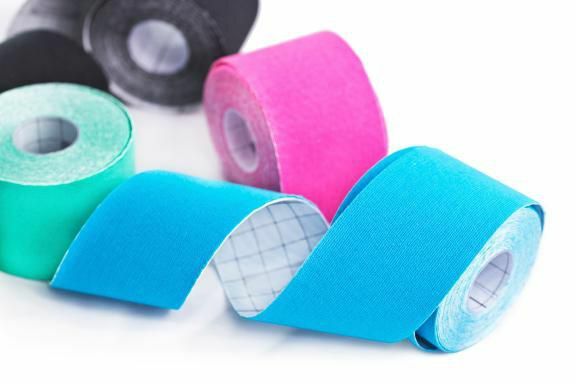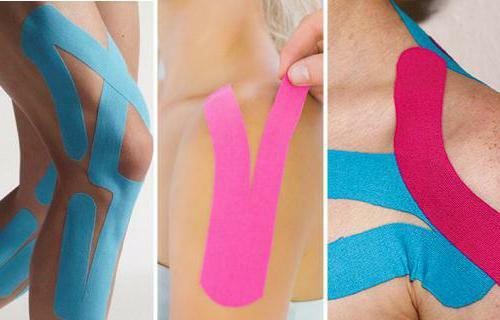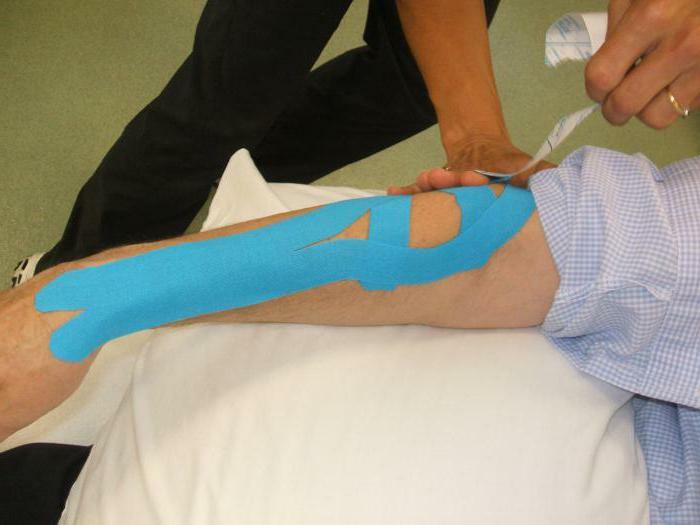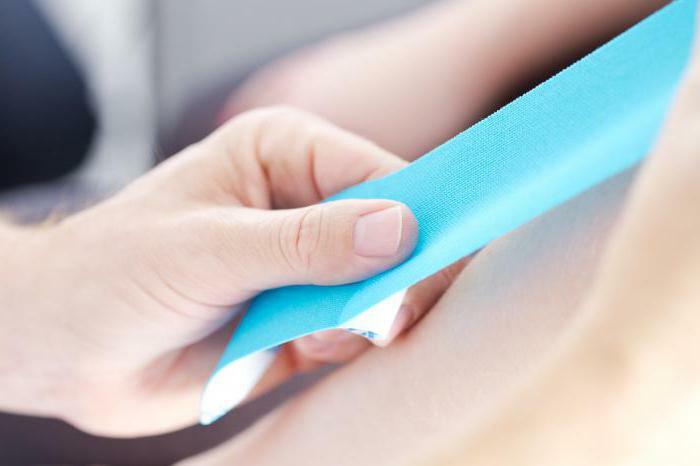Kinesiotherapy - what is it? Indications for use and effect
Observing viewers have long noticed that many athletes glue the body with incomprehensible colored ribbons. It is unambiguously clear that this is not an ornament. So what is it? Why is it needed and who can help?

Effective non-pharmacological method
Relatively recently, a unique method appeared - kinesiotherapy. What it is? It seems to be easy to explain, but a lot of myths and misunderstandings arose suddenly around the method. It is a question of non-medicamentous effect on damaged or overstrained muscle tissues with the help of a special tape - kinesiotype.
The name of the method was formed from two words: "kinesio" means movement and "tape" - the actual tape. Kinesiological tieing can relieve pain, but does not limit mobility, does not cause allergies, improves blood flow and movement of lymph. With the correct application of the muscles, they are able to work adequately and withstand intense stresses, since part of the stress is assumed by the kinesiotype.

How kinesiotype looks
The adhesive tape has elasticity similar to human skin. It is made of a cotton base, on which an acrylic adhesive layer is applied. After application to the skin, the body temperature activates the glue, allowing it to fix well on the surface. The cotton base is permeable to air and moisture. This allows you to leave the adhesive tape for a long time( depending on the readings).The minimum teip is applied for a day, maximum - for 2 weeks. During the use of kinesiotherapy, the patient can freely move, rest or take a shower.
The medical industry produces various types of kinesiotherapy. This can be a ribbon of different widths and lengths or figured items.

History of the
method In 1973, a Japanese physician living in America developed an interesting method - kinesiotherapy. What it is, he had to explain more than 10 years. The world premiere of the method occurred only in 1988, at the Olympics in South Korea. The name of this doctor is Kenzo Kase. After the Olympics in Seoul, the method rapidly gained popularity, although competent specialists were not enough.
Today, there are several international training centers that allow the use of therapeutic kinesiotherapy in many fields of medicine. In Europe, the largest centers are located in the Netherlands and Germany. From here come specialists who can apply kinesiotherapy in sports medicine, traumatology, orthopedics, neurology, pediatrics, gynecology and obstetrics.
Residents of the CIS countries received wide access to the methodology only in the beginning of 2000.The method became popular not only among athletes, but with formal training of specialists there were certain problems. Since 2016 the problem of training specialists has been solved. Training kinesiotyepirovaniu, according to the license of the Department of Education of Moscow, is conducted in a specialized educational institution( Academy of therapeutic taypirovaniya).The general course takes 160 hours and consists of 10 seminars, teaching to apply the methodology in different fields of medicine.

Indications for use
When is kinesiotherapy applied? What it is? In fact, this is a modern method of physical rehabilitation, which is part of a set of restorative procedures after injuries or surgeries. Correct application of the adhesive tape allows you to get the following effects:
- to remove pain;
- stimulate the anti-inflammatory process;
- to improve lymph drainage;
- to facilitate the movement of limbs or joints;
- relax the overworked muscles;
- to eliminate swelling and bruising;
- gently stabilize the joints.
Tap begins to act immediately after the application and can be kept in one place for up to two weeks. Numerous studies show that the maximum effectiveness is expressed in the first 5-6 days. Then there is a gradual decrease in the therapeutic effect.

To whom the kinesiotypeping
is shownMany rehabilitation specialists claim that kinesiotherapy is quackery and there are no studies confirming the effectiveness of the method. However, since 1988, a huge evidence base of effectiveness has been accumulated in various fields of medicine. Work in this area has not been completed to this day, evidence comes with an enviable regularity.
Today we can definitely say that kinesiotherapy gives a positive effect:
- with sprain;
- with subluxations of the ankles, shoulder, fingers;
- removal of bruises and bruises;
- for pain in the shoulder( humeroscapular retaritis);
- in the treatment of epicondylitis;
- with plantar fasciitis( calcaneal spur);
- with subluxations of patella, knee pain and chondromalacia;
- for the treatment of neck pain;
- for back pain and swelling of the legs in pregnant women;
- for osteochondrosis;
- for lumbago and other diseases.

In addition, the method is effective in the treatment of functional disorders of motor skills( pediatrics), and in the postoperative period it serves to prevent the appearance of gross scars.
The difference between kinesiotherapy and hard tapping
Hard tapping can be combat( functional) or therapeutic immobilization. It is performed by a conventional or elastic patch and serves to fix, relieve the load or limit mobility in the area of trauma.
Kinesiotherapy( what it is - today more and more rehabilitologists understand) serves to preserve, and in some cases even increase, the mobility of damaged areas( limbs).The pulling tape( kinesiotype) takes on some of the load, raises the skin, improves drainage of liquids, and supports the body, allowing you to use your own strength for rehabilitation.

Methods of application
Kinesiotherapy in Moscow, and in Russia in general, is becoming more popular every day. It is right to impose teips taught at specialized courses in America, in Asia, in Europe, and now, as already mentioned, in Moscow.
If to explain in a simplified way, there are 2 ways of imposing kinesiotypes:
- Unstretched form of application is used in case when it is necessary to raise the skin and facilitate lymph drainage. Before the application stretches the skin on the damaged area, and after gluing the teip, the skin and muscle return to normal state, rising slightly.
- Stretched form of application. In this case the kinesiotype is stretched, and after gluing it is shortened, supporting the injured area. Thus, it is possible to create additional pressure, stimulate the nerve receptors and calm the pain.

Contraindications
Kinesiological teiping is contraindicated in elderly patients, people with hypersensitivity to skin and patients with systemic skin diseases.
Well, finally a little about the myths. There is an opinion that the color of teip says about its purpose: blue - removes swelling, red - warms up, black - gives maximum tension. But this is not true. The color can be anything, the action of the kiniseoside depends on the method of application.
